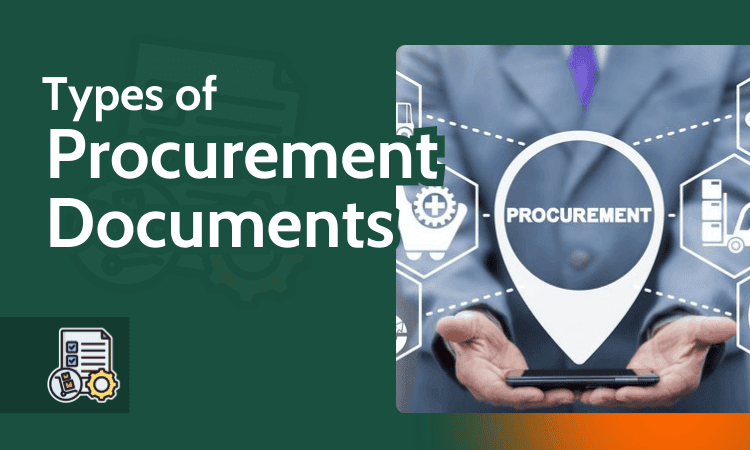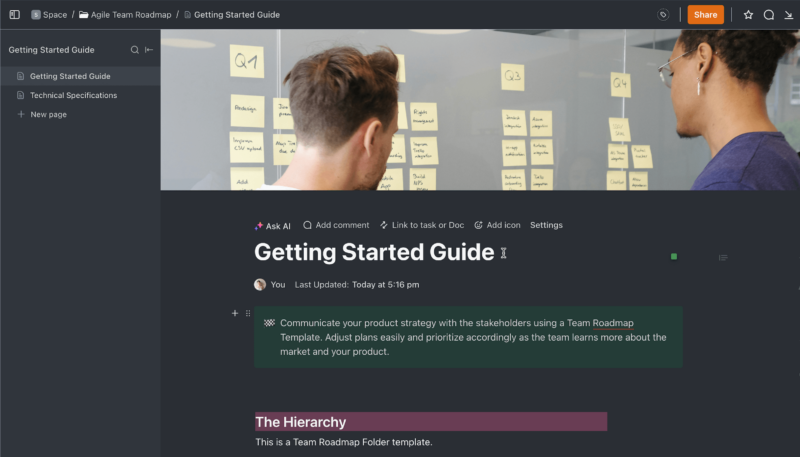
Dealing with business processes, such as purchasing orders and managing payments, can get complicated. That’s why you need well-crafted procurement documents along with the best project management software to help manage them. These essential documents ensure transparency, accountability and efficiency in the procurement process.
In this guide, we’ll delve into the meaning, importance and real-life examples of various types of procurement documents. Whether you run a small or large business, understanding these documents and having proper procurement management can make a significant difference in your operations.
Learn more about our editorial team and our research process.
What Are Procurement Documents?
Procurement is the process of purchasing goods, services or resources needed to operate a business. The procurement cycle typically includes identifying project requirements, sourcing potential suppliers, negotiating a contract, creating a purchase order, receiving goods or services, and managing payments.
Procurement documents are formal records that capture the details of each stage of the procurement process, such as specifications, pricing, terms and conditions. These documents are important for both the buyer and the seller. This is because they serve as a contractual agreement outlining both parties’ expectations, responsibilities and deliverables.
Importance of Procurement Documents
Successful projects begin with solid procurement documentation that is established in the early stages. It can guide you through the procurement process and ensure the smooth running of your business’s operations from start to finish. Let’s delve into the importance of the documents used in procurement.
- Transparency and accountability: A procurement document creates a clear and auditable trail of the procurement cycle. This helps both buyers and sellers avoid any miscommunications, conflicts or even scope creep throughout the process.
- Legal protection: Like a contract or agreement, a procurement document is a legally binding contract between businesses and suppliers. It outlines the terms and conditions of the agreement. It can protect both parties in cases of disputes or disagreements.
- Efficient supplier selection: A formal document like a request for proposal (RFP) allows businesses to evaluate potential suppliers on various aspects, such as pricing, quality and delivery terms. This enables them to select capable technical partners who align with their values.
- Quality standards: Procurement documents establish quality standards, requirements and expectations that suppliers must meet. These documents ensure that businesses receive a product or service that meets their specifications.
- Effective organization: Businesses can use procurement documents and the best workflow software to centralize all information and streamline the procurement process. This makes it easier to track orders, monitor deliveries and manage budgets.

the project in one convenient location.
7 Main Types of Procurement Documents
Procurement documents include a wide range of documents that serve various functions throughout the procurement cycle. Below are seven main types of procurement documents commonly used in business transactions.

necessary details for purchasing goods and services.
Examples of Procurement Documents by Industry
The main types of procurement documentation generally apply across different industries. In this section, we will examine the list of procurement documents in construction, healthcare and IT.
Procurement Documents in Construction
In the construction industry, the procurement process refers to the acquisition of materials, equipment and services needed to complete the project. This process involves many stakeholders, such as clients, contractors, subcontractors, suppliers and the procurement manager.
Construction procurement documentation is the most important artifact for soliciting bids, evaluating vendors and establishing clear expectations. Key procurement documents include RFPs for construction projects, IFBs for subcontractor and supplier selection, construction contracts, and purchase orders for materials and equipment.
If you’re looking for software to help manage construction projects, check out our roundup of the best construction project management software.
Procurement Procedures in Healthcare
Healthcare procurement involves managing suppliers, requesting and approving healthcare products, monitoring inventory, tracking expenses and managing budgets. The process typically starts with identifying suppliers and then submitting an RFI or RFP with the requirements. These include the quantity, quality and delivery timelines of the goods or services needed.
After suppliers review the requirements and submit their offers, the procurement team evaluates and selects the supplier, which is followed by negotiations and contract signing. The process then moves to requesting and approving purchase orders. Effective inventory management is also crucial to ensure that the required goods are available and to avoid excess inventory.
If you’re in the market for HIPAA-compliant project management software for your healthcare organization, take a look at our roundup of the best healthcare project management software.
Procurement Documents in IT
In the IT industry, procurement is a critical organizational element — it ensures that the goods and services required for business operations are acquired in a timely and cost-effective manner. IT procurement documents also reduce cybersecurity risks, ensure compliance with IT policies and enable informed decision-making.
Key IT procurement documents include RFIs, RFPs, vendor contracts, purchase orders, service-level agreements (SLAs) and asset management records. If you need software to help you manage IT projects and all of their related documents, we recommend monday.com. You can find out why in our full monday.com review.

procurement teams manage documents all in one place.
Final Thoughts
Procurement documents lay the groundwork for successful procurement processes. From RFIs and RFQs to purchase orders, each document helps maintain transparency, accountability and compliance throughout the procurement lifecycle.
In addition to documentation, organizations should adopt procurement best practices. These may include conducting thorough market research and engaging potential bidders early on. It’s also important to focus on effective negotiations, clear communication with clients and a strong understanding of the sell-side perspective.
We would love to hear from you. What are your thoughts on procurement documentation and its role in project management? What types of procurement documents does your industry use? Have you faced any challenges in procurement? Share your thoughts below, and thank you for reading!
FAQ: Procurement Documentation
-
The five main documents for procurement are the request for information (RFI), the request for proposal (RFP), the request for quotation (RFQ), the invitation for bid (IFB) and the purchase order (PO).
-
The key procurement documents include the request for information (RFI), the request for proposal (RFP), the request for quotation (RFQ), the invitation for bid (IFB), the purchase order (PO), the sales proposal and the contract.
-
Procurement documentation typically includes information such as the buyer’s specifications of the goods or services, the terms and conditions, pricing details, delivery schedules and any other legal information necessary for the procurement lifecycle.
-
The standard documents for procurement often include the request for information (RFI), the request for proposal (RFP), the request for quotation (RFQ), the invitation for bid (IFB) and the purchase order (PO).
{“@context”:”https://schema.org”,”@type”:”FAQPage”,”mainEntity”:[{“@type”:”Question”,”name”:”What Are the 5 Documents for Procurement?”,”acceptedAnswer”:{“@type”:”Answer”,”text”:”
The five main documents for procurement are the request for information (RFI), the request for proposal (RFP), the request for quotation (RFQ), the invitation for bid (IFB) and the purchase order (PO).n”}},{“@type”:”Question”,”name”:”What Are the Key Procurement Documents?”,”acceptedAnswer”:{“@type”:”Answer”,”text”:”
The key procurement documents include the request for information (RFI), the request for proposal (RFP), the request for quotation (RFQ), the invitation for bid (IFB), the purchase order (PO), the sales proposal and the contract.n”}},{“@type”:”Question”,”name”:”What Is Included in Procurement Documentation?”,”acceptedAnswer”:{“@type”:”Answer”,”text”:”
Procurement documentation typically includes information such as the buyeru2019s specifications of the goods or services, the terms and conditions, pricing details, delivery schedules and any other legal information necessary for the procurement lifecycle.n”}},{“@type”:”Question”,”name”:”What Are the Standard Documents for Procurement?”,”acceptedAnswer”:{“@type”:”Answer”,”text”:”
The standard documents for procurement often include the request for information (RFI), the request for proposal (RFP), the request for quotation (RFQ), the invitation for bid (IFB) and the purchase order (PO).n”}}]}
The post 7 Types of Procurement Documents: Meaning, Importance and Examples for 2024 appeared first on Cloudwards.



